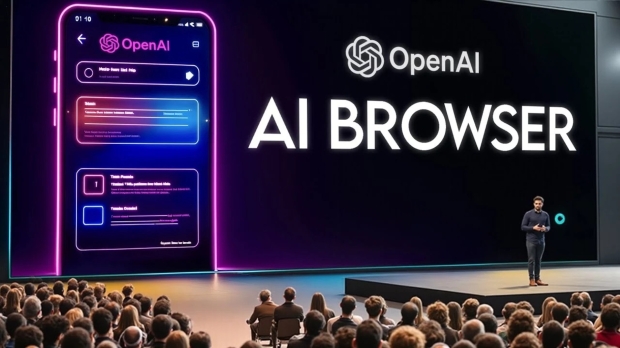Artificial Intelligence: From Emerging Technology to Business Imperative
Artificial Intelligence (AI) is rapidly evolving from a nascent technology into a core component of modern business strategy. While many organizations are capitalizing on carefully planned AI initiatives, others are adopting AI solutions without integrating them into a broader strategic framework. As a result, certain AI tools deliver clear benefits in automation and efficiency, while others fall short, resulting in costly investments with little return.
Separating Hype from Impact
For businesses aiming to harness AI as a true driver of operational success, it is essential to differentiate between marketing rhetoric and genuine, measurable outcomes. Despite the transformative potential of AI, organizations that fail to establish clear objectives or address integration and security challenges risk turning a potential competitive advantage into an expensive misstep.
Pitfall 1: Investing in AI Without a Clear Business Case
Many companies are tempted to embrace AI simply to demonstrate innovation or emulate industry peers. However, AI must address specific challenges—such as inefficient processes or poor customer satisfaction—to deliver meaningful value. Without a targeted business case, investments in AI may not align with the unique needs of the organization, thereby diluting its potential benefits.
Solution: Begin with Business Objectives
AI should be regarded as a tool to achieve strategic goals, not as an end in itself. Companies need to start by identifying critical challenges and operational inefficiencies before selecting an AI solution. By doing so, organizations can ensure that any AI implementation is purposefully aligned with business objectives, thus fostering measurable improvements and value creation.
Pitfall 2: Poor Integration with Existing Technology
A significant roadblock to successful AI implementation is inadequate integration with existing systems. When AI tools do not seamlessly connect with systems like ERP or CRM platforms, they can create inefficiencies—forcing employees to switch between multiple platforms and manually manage data transfers. This lack of cohesion not only disrupts workflow but also heightens the risk of errors and data inconsistencies.
Solution: Prioritize Seamless Integration
Before deploying an AI solution, it is crucial to verify its compatibility with current software and operational processes. Organizations should prioritize tools that integrate effortlessly into existing workflows, particularly those that are cloud-based and provide real-time data access. This approach ensures that AI augments productivity rather than introducing unnecessary complexity.
Pitfall 3: Overlooking Data Privacy and Security
As organizations adopt AI, maintaining data privacy and robust security becomes increasingly challenging. Many executives regard data management issues as a top obstacle to fully leveraging AI’s potential. The risk is especially pronounced when AI solutions utilize sensitive data for training purposes, potentially leading to inadvertent data exposure. Such concerns are critical in highly regulated industries where compliance is paramount.
Solution: Embed Security and Compliance from the Outset
A rigorous focus on security and compliance is essential when integrating AI into business processes. Organizations must ensure that AI solutions adhere to major data protection standards—such as the General Data Protection Regulation (GDPR) and the California Consumer Privacy Act (CCPA). Transparency, auditability, and strict controls over data usage are non-negotiable criteria. By embedding AI within a secure framework, companies can mitigate risks and maintain stakeholder trust.
Pitfall 4: Relying on AI Without Adequate Human Oversight
While AI excels at streamlining repetitive tasks, it is not designed to supplant critical human judgment. Organizations that view AI as a complete replacement for human expertise risk compromising the quality of complex decision-making. For instance, although AI systems can flag potential anomalies in financial data, human analysts are crucial for contextual validation and nuanced interpretation.
Solution: Enhance Human Decision-Making Through AI
The most effective AI implementations strike a careful balance—automating routine tasks to boost efficiency while preserving human oversight for strategic analysis. Studies have indicated that well-integrated AI can significantly enhance employee productivity by alleviating mundane work and allowing professionals to concentrate on higher-value activities. This synergy between AI and human expertise is key to realizing AI’s full potential.
Strategic AI Investments for Lasting Impact
Ultimately, the successful deployment of AI hinges on a strategic, well-planned approach. Organizations that align AI initiatives with clearly defined business objectives, ensure seamless integration with existing systems, enforce stringent security measures, and maintain vital human oversight will reap the highest returns on investment. Rather than chasing transient AI trends, forward-thinking companies focus on value-driven solutions that address real operational challenges and deliver measurable results.
Further Considerations
Beyond the tactics outlined, businesses might also consider the broader impact of AI on organizational culture and talent development. Integrating AI successfully often requires upskilling employees to work alongside technological tools, fostering a data-driven culture, and aligning innovation with long-term strategic goals. Continuous evaluation and iterative improvement of AI systems can further enhance operational efficacy and competitive positioning in the evolving digital landscape.
By staying ahead of these trends and thoughtfully navigating common pitfalls, organizations can transform AI from a buzzword into an enduring catalyst for business growth.





